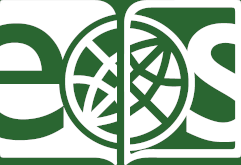This book contains the original report from the Conference on the Role of Gravitation in Physics, which took place at the University of North Carolina, Chapel Hill, over six days in 1957. The report was taken down by Cécile DeWitt and several other “reporters,” as part of a conference funding agreement with the Wright Air Development Center, a U.S. Army (Air Force) funding body (the report's ‘official’ designation is: WADC Technical Report 57-216). Cécile DeWitt then edited the recorded material into its final form. The report, though publicly available as a government document, has not previously been published in book form, and there are not many copies of the report left in existence. Given the immense historical significance of the conference - giving gravitational research some much needed impetus at a time when it was in a state of dire neglect - we thought it was high time to produce a version of the report ‘for the masses’ as it were. The version presented here is almost entirely faithful to the original, and aside from the correction of a few spelling mistakes (and the possible addition of some entirely new typos!) features no substantive alterations or annotations. However, in order to make the document more navigable and more useful as a research tool, we have added an index (of both names and subjects) and also imposed a little more structure on the sessions, by setting some of the meatier contributions as chapters. This in no way interferes with the ordering, and simply amounts to the addition, in several places, of a title to the presentations and discussions that follow.
In addition to classic debates over cosmological models and the reality of gravitational waves,
As Cécile DeWitt notes in the foreword to the original report (also reproduced here), the document constitutes a somewhat incomplete representation of the actual proceedings in various ways, and does not amount to an exact transcription of all that went on at the conference.2 However, the discussions that were captured are often very rich, and of such an interesting (and, I would say, still highly relevant) nature, that the report fully deserves its present resurrection if only to bring these discussions alone to a wider audience. However, the transcribed presentations also often reflect a research area on the cusp of various exciting discoveries, in astrophysics, cosmology, and quantum gravity. We are sure that both physicists and historians of physics will find much to interest them in the following pages.
By way of placing this report in the context of its time, an introductory chapter provides a brief account of how the conference came to be, for it is a rather remarkable story in itself. We then reproduce the original front matter from the report, followed by the report itself.
DR
Max Planck Institute for the History of Science, Berlin
September 2010
